“Fairs are still the core of contemporary art meetings and the fastest vehicles for entering a new market and getting to know the art scene of a city.”
Interview with founder José Luis de la Fuente and director Maria Gracia de Pedro of JosédelaFuente.
With its location in the peripheral part of Santander, on the northern coast of Spain, fairs play a crucial role in the program of the gallery JosédelaFuente. From the very beginning, they have explored the fair format in different ways spanning from local and traditional to international and experimental. This year, they will participate in Code Art Fair in Copenhagen for the first time, eager to put a mark on the vibrant Nordic art scene and connect with a local and international audience in the late Copenhagen summer. Here, founder José Luis de la Fuente and director Maria Gracia de Pedro reveal their line up for Code and share their hopes for their very first presentation in Denmark.

Name: JosédelaFuente
Opening year: In 2007, José de la Fuente opened Nuble and seven years later, in 2014, he redefined the direction of the gallery and changed its name to JosédelaFuente with the aim of working with national and international artists
Location: Santander, Spain
You will be participating in this year’s Code Art Fair, which takes place August 30 – September 2 in Copenhagen. What makes Code Art Fair special for you as a gallerist?
We have been following Code since the very first edition. A part of the strategy of the internationalization of the gallery for this year was to have a presence in European countries where we had not been promoting our artists. Copenhagen has a very established and vibrant art scene, and we wanted to present our artists in northern Europe, so Code seemed like the perfect spot to do just that. Also, we are very interested to get more insights into private Danish collections, and we hope that our conceptual project is in line with the interest of the local collectors.
You will present a three-person booth, which will feature works by Tania Blanco, Enric Fort Ballester, and Arturo Hernández. What can the visitors expect from the exhibition?
Let’s say that the proposal is a group show fitted for a booth. A strong project, where the three artists analyse the concept of freedom and economy, from multiple perspectives through works loaded with a strong political meaning. In the booth, you can find different positions towards ideas that arise in the middle of our comfort society, with concepts such as money, ethics, production, Europe and its own system of liberalism and the questions that the artists asked and that every day, we approach.
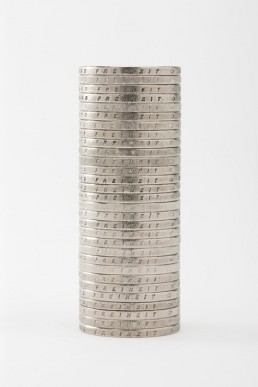
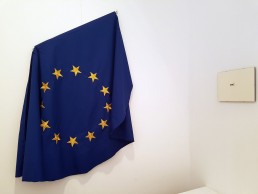
Can you elaborate a bit on the interplay between the artists? How do their artistic practices complement each other?
For this proposal, the works by Tania Blanco, Enric Fort Ballester, and Arturo Hernández Alcázar are playing with the concept of power, from three different perspectives. Tania Blanco and Enric Fort Ballester highlight the paradoxes of contemporary society, each making a call to action through their own artistic language. Blanco focuses on the disregard for the lies that surround us, which shapes the way we live, and proposes alternative views that will help us awaken from our lethargy. Fort Ballester advocates for a more active role in political life as the only option in an increasingly apoliticized society, questioning freedom as a concept that is closely linked to the economy. On the other hand, Arturo Hernández Alcázar suggests a revision of the recognized official history, querying its defining monuments. This reflection leads him to the demolition of structures in a breakdown act, provoking estrangement to what we regard as normal.
Can you tell us about the process of curating an exhibition in the setting of an art fair and more specifically your collaboration with Tania Blanco, Enric Fort Ballester, and Arturo Hernández leading up to Code Art Fair?
In the last years, the gallery has defined itself with a specific line of work. We do a brainstorming to get the right topic depending on where we are going to present the artists, the country, political situation and technical details such as dimensions and shipping. After the theme is decided, and the artists had been chosen, we discuss the proposal with them and start working on it together until the fair takes place. This way of always choosing a theme that connects the artists is not a common practice, as when you participate in a fair you are taking a risk and you don’t want to waste money, so sometimes the theme conditions the proposal.
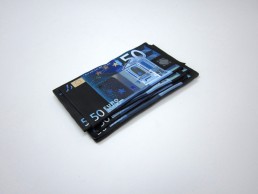
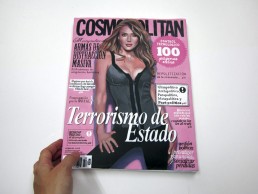
What are the most challenging and rewarding aspects of participating in a fair?
JosédelaFuente has its location in the Spanish periphery, so for us the participation in local and international fairs is the core of our programme. Otherwise, we could not promote our artists as deserved. We have been participating in fairs since the very beginning of the gallery for more than 10 years. However, we have been developing and we are constantly learning and, of course, the fairs we attend today are different from the ones we started doing. Nowadays, we care about the quality of the fair, and different types of those too, we want to present our artists in renowned fairs such as Arco in Madrid and in more experimental ones like Poppositions in Brussels. The possibilities that a fair provides you, the new contacts, the updates with people you only see in these events and the learning experience are things we will never change.
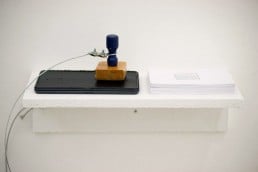
Art fairs have been sprouting across the globe the past decade causing the industry to talk about a global fair fatigue. How do you see this and where do you see the future of the art fair is heading?
Fairs are exhausting for a gallery team, professionals, and even for the collectors. Too much information in a really short period of time. Even if new cooperation projects had arisen in the last few years in between galleries, like CONDO or DC Open in between Dusseldorf and Cologne (which we will take part of this year after CODE, with a solo show of the artist Paco Guillén), fairs are still the core of contemporary art meetings and the fastest vehicles for entering a new market and getting to know the art scene of a city.
What are you personally looking forward to at this year’s Code Art Fair?
This is going to be our first presentation in Denmark as a gallery and we are so excited. We are hoping that Danish collectors will feel attracted by the works we will be presenting at the fair, and that they are not afraid to ask about their artists’ practices. We are the ambassadors of our artists; we are going there to promote and disseminate them. If you are in town, pass by our booth; we would love to explain to you further.
JosédelaFuente
Daoiz y Velarde 26 – 39003 Santander Spain
+34 942 313 745
info@josedelafuente.gallery
Opening hours
Tuesday to Saturday, 12 – 14 and 18 – 21 or by appointment
Read more here.
About Code Art Fair
The third edition of the ambitious art fair Code will take place August 30 – September 2, 2018, in Copenhagen, Denmark – one of the world’s most vibrant and forward-looking capitals. As the only international art fair in Scandinavia, Code presents leading as well as emerging galleries from all over the world. Get an overview of this year’s participating galleries here.
Address
Bella Center
Center Boulevard 5
2300 København S
Opening Hours
Thursday, August 30 | Public Vernissage 17-20
Friday, August 31 | 11-20
Saturday, September 1 | 11-20
Sunday, September 2 | 11-18
Read more about Code here.
Get your free copy of Artland Magazine
More than 60 pages interviews with insightful collectors.